Online shopping currently accounts for around 14% of all retail sales worldwide, and the growing variety of eCommerce platforms and solutions makes it simple for eCommerce entrepreneurs of all types to establish a presence in this rapidly expanding global industry.
WooCommerce and Magento (now Adobe Commerce) are two of the most popular shop builders on the Internet, yet they operate in quite different ways. Which is the best option for your company?
This is mostly determined by your technological abilities and your goals for the future of your eCommerce business. This post will compare and contrast WooCommerce vs Magento so you can make an informed decision about which is best for your website.
We’ll compare WooCommerce with Magento in this article, including their essential features, performance, security, pricing, beginner-friendliness, and even product management. You’ll be able to know which option is best for you by the time you’ve finished reading.
What’s Special about WooCommerce & Magento?
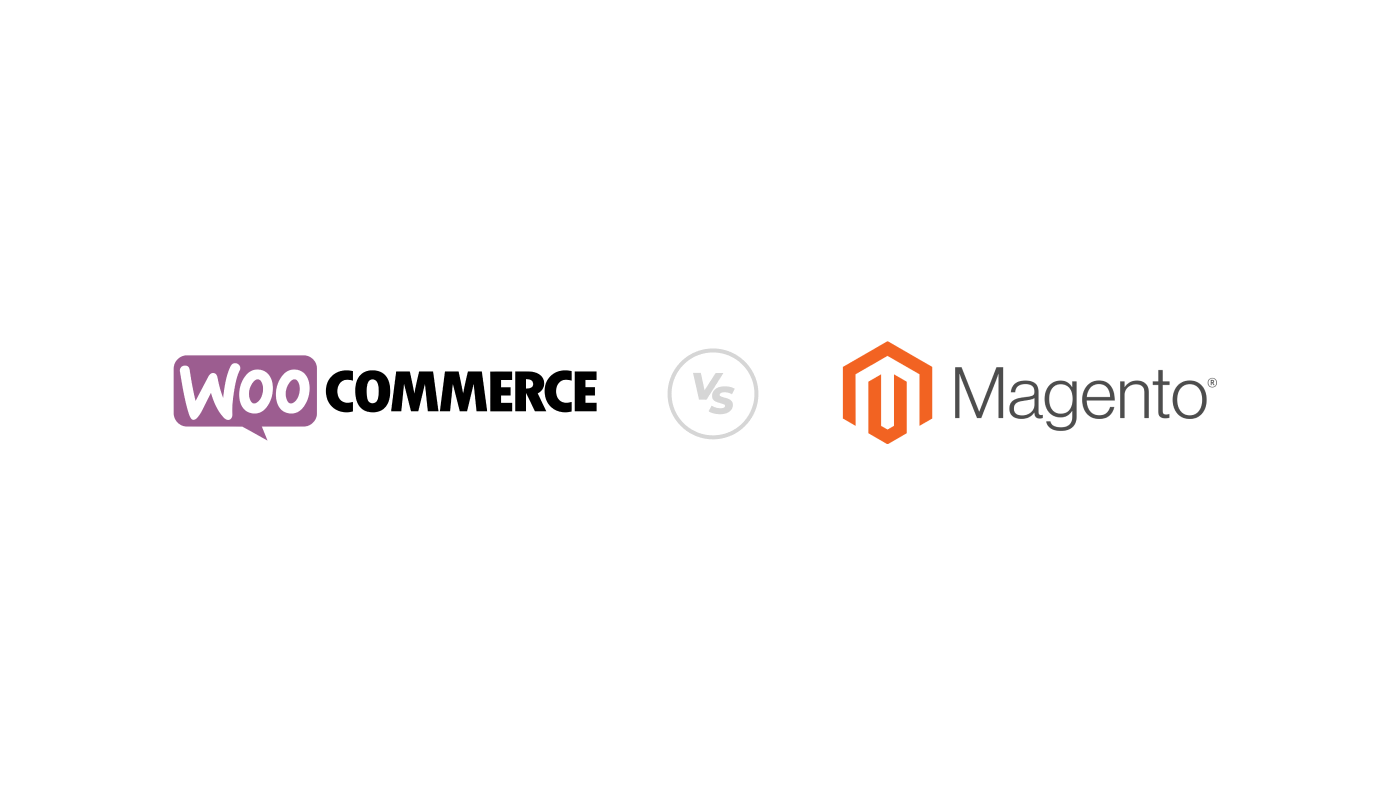
Both WooCommerce and Magento have a lot of features and are very popular. It’s not easy to choose an overall winner, and weighing the advantages of each platform may leave you perplexed while leaving your clients without a way to purchase from your site.
Thankfully, we’re here to assist you in making an informed decision. When it comes to e-commerce, there is no one-size-fits-all answer, but you can always make the best decision for your specific needs if you have all the data.
🧐 Let’s have a look at what makes WooCommerce and Magento so special:
WooCommerce
WooCommerce is a powerful WordPress plugin that allows you to sell your products online. It has all of the functionality you’d expect from an e-commerce platform while keeping the simplicity of its parent platform.
📈 Total live sites: 3,121,088
Magento
Magento is an e-commerce platform designed specifically for web developers and medium to big online retailers. It has one of the most comprehensive feature sets in the industry, making it perfect for stores with high goals.
📈 Total live sites: 203,021
WooCommerce vs Magento Features: At a Glance
Both WooCommerce and Magento are open-source platforms that anyone in the community can contribute to. Let’s take a look at a quick overview of the platform:
| WooCommerce | Magento |
|---|---|
| Completely free platform | Offer only a free Community version and a few premium features |
| Requires hosting provider | The community version requires a hosting provider. The premium version has hosting included |
| Supports unlimited products to sell | Enables you to add unlimited products |
| Nearly all WordPress themes are supported, and there are several customization possibilities available. | It has a theme-based system with a good selection of features. |
| There’s an extension system included, as well as hundreds of alternatives. | Supports extensions and provides a large selection of them. |
| Higher and advanced security features are included to protect your store. Along with necessary updates. | Advanced security features are available. |
| This platform is quite easy to use and highly customizable. Even for beginners. | This platform is recommended for users that have (at least) basic knowledge of web development. |
WooCommerce vs Magento Comparison
WooCommerce was first released in 2011. WooCommerce is a WordPress plugin that allows store owners to instantly convert their WordPress site into an eCommerce site.
Magento debuted its first version of Magento 1 in 2008, followed by Magento 2 in 2015, which grabbed the eCommerce industry by storm.
WooCommerce
Most WordPress users are familiar with WooCommerce. Nearly 400,000 websites are hosted on this massively popular e-commerce platform.
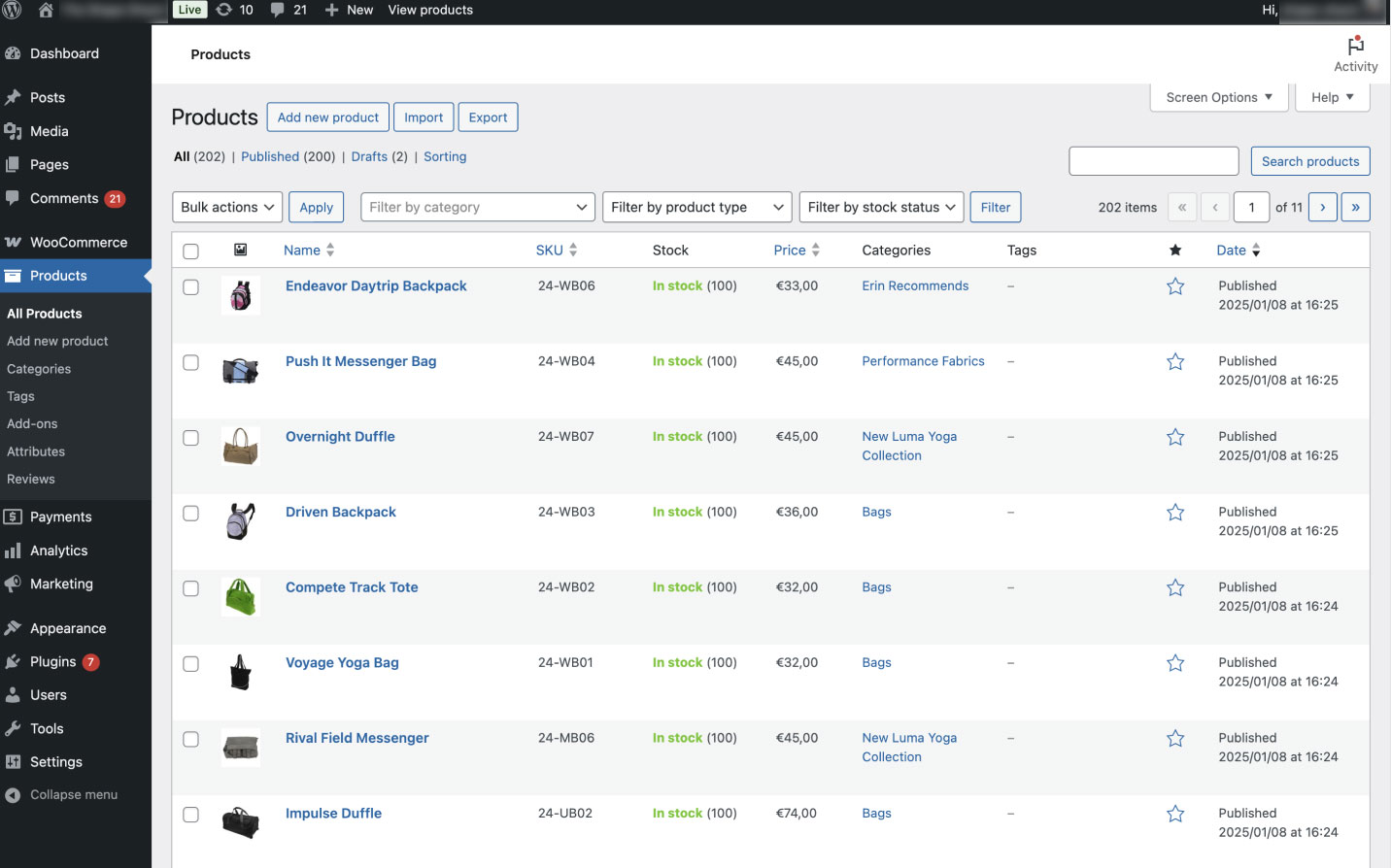
It includes practically all of the features you’ll need to start an online business, and it also has a number of sophisticated features available through its extension system.
⚡ Key features
- Allows for an infinite number of goods to be supported.
- A powerful extension system based on the WordPress plugin format is included.
- Using extensions, you can choose practically any payment processor you desire.
- There are dozens of paid and free themes available.
😄 Pros
- Aside from the cost of web hosting, creating a store is completely free.
- If you’ve worked with WordPress before, you’ll find it simple to learn.
- Its users have access to vast documentation. In addition, if you have any further queries, you can contact the project’s crew.
- Using an extension integrates with Google Analytics.
- SSL support is included, however, you must obtain your own certificate.
😐 Cons
- You’ll need to learn two new platforms if you don’t already utilize WordPress.
- The cost of premium themes and extensions can rapidly add up.
🤔 WooCommerce or Shopify: Which one is the best eCommerce platform?
WooCommerce and Shopify are two of the most popular and simple-to-use eCommerce platforms on the market. Both WooCommerce and Shopify have a number of advantages and wonderful features. Learn more
Magento
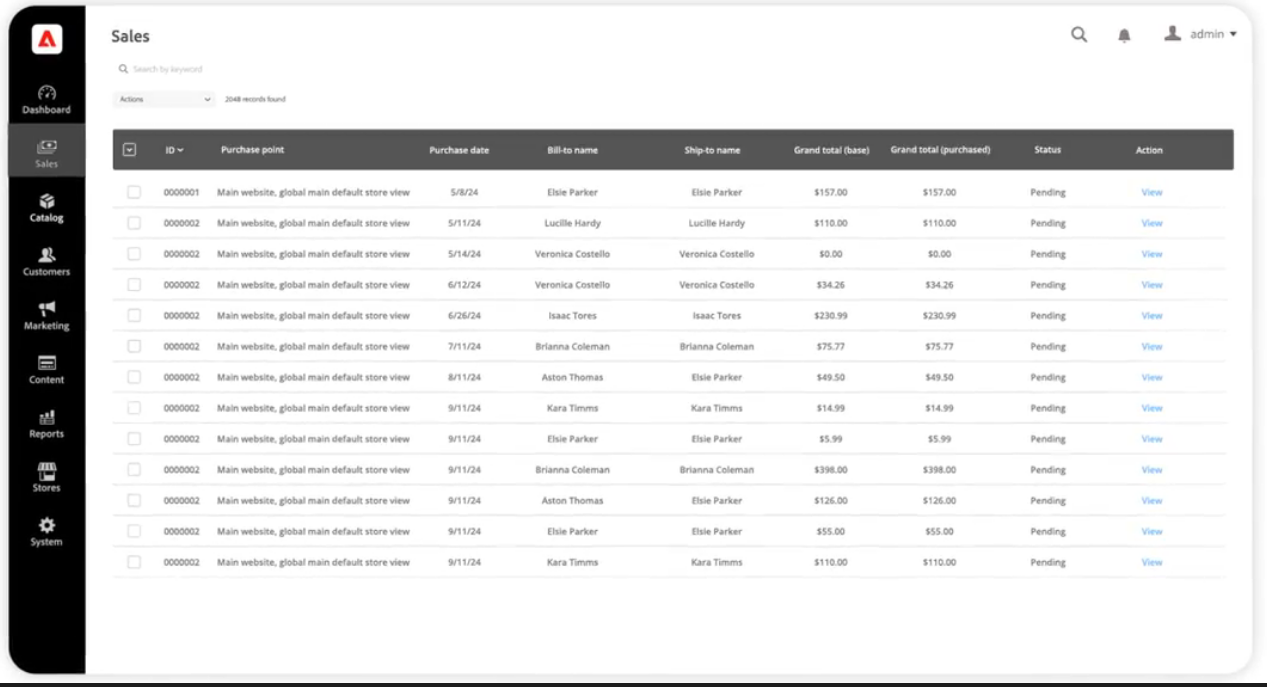
Magento aka Adobe Commerce is more aimed towards businesses than WooCommerce, which bills itself as a community solution. However, this does not rule out the possibility of small enterprises benefiting from its features.
Magento has a free Community Edition that is quite capable on its own, as well as an Enterprise Edition for larger businesses. We’ll concentrate on the features of the Community Edition in this comparison.
⚡ Key features
- As any self-hosted platform should, it supports an endless number of items!
- It comes with its own set of theming and layout options.
- APIs that can attach to any third-party solution are included.
- Admin interfaces and product production tools that are simple to use.
😄 Pros
- It’s designed to scale. Large stores should be no problem for Magento, as long as your host can handle them.
- A streamlined approach allows customers to check out faster. Furthermore, guest checkout is enabled by default.
- Right out of the box, it works with PayPal, Authorize.Net, and Braintree.
😐 Cons
- With its steep learning curve, Magento feels more targeted toward developers than average consumers.
- Its Enterprise Edition can be pricey, but given its target market, this is to be expected.
🤔 Which one is more compatible for beginners?
When comparing WooCommerce versus Magento, Magento doesn’t appear to be as beginner-friendly out of the box. Users can overcome this by consulting the vast documentation – and those who persevere will reap additional benefits from the platform.
It’s ideal for ambitious users that want to fast develop their businesses while still taking the time to learn the platform.
On the other hand, WooCommerce makes it easy to accomplish backend activities and express your style with the storefront thanks to its open-source, adaptable, and extendable platform.
Difference between WooCommerce & Magento
Examining the e-commerce market share is also fascinating. Of course, you shouldn’t choose a solution only on the basis of its popularity, but it might be useful to discover what your competitors are using.
According to BuiltWith, WooCommerce powers 29% percent of the top 1 million websites on the internet as of October 2021. On the other hand, Magento comes in third with 8% percent of the vote.
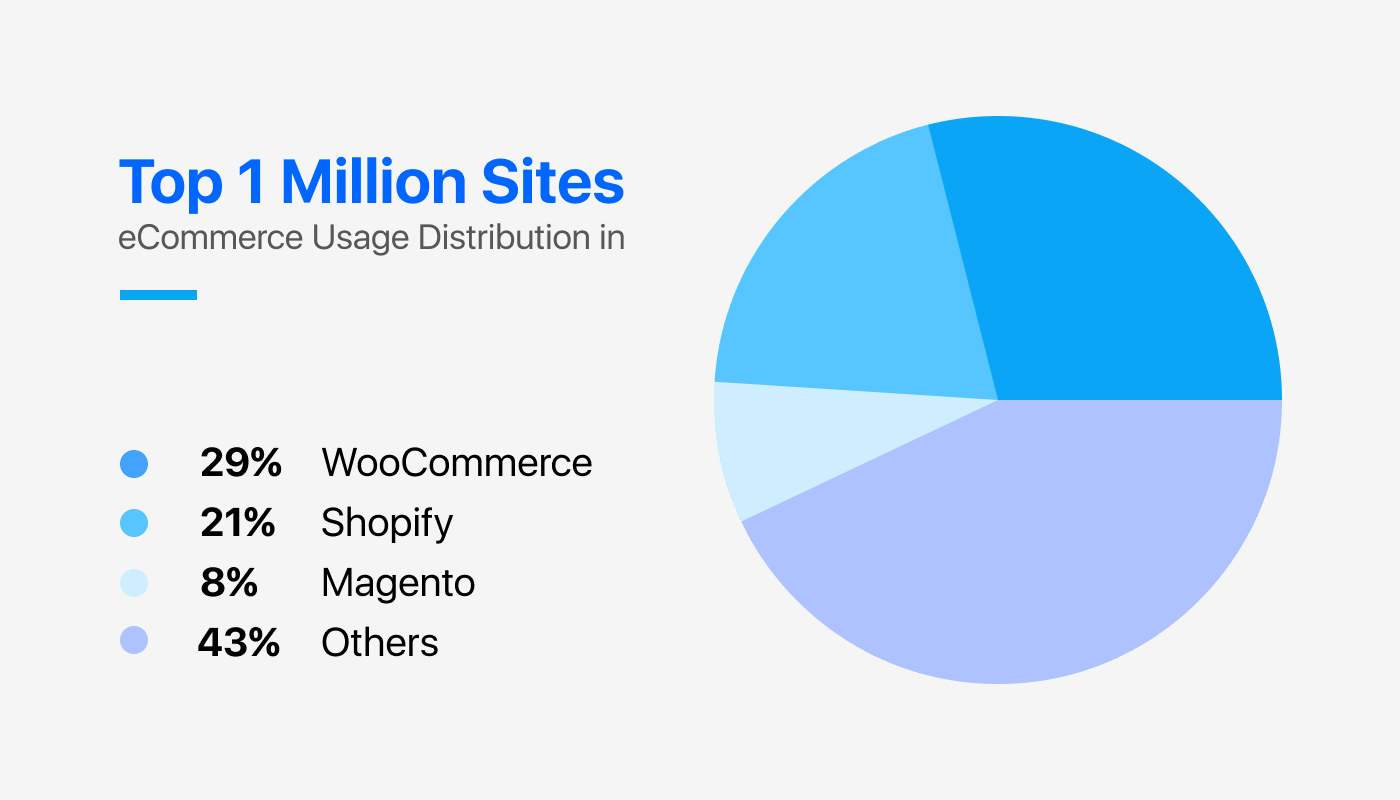
As we all are aware, WooCommerce is a self-hosted eCommerce software that offers additional customization choices. This means you can use the code to gain access to various areas of your store.
When comparing Magento versus WooCommerce, keep in mind that the independence that WooCommerce provides comes at a cost. To put it another way, you’ll need to know how to manage your site’s technical aspects and maintain it secure.
#1 Inventory Management
There is no restriction on the number of products that can be displayed on any platform’s website. You can have as many products as you want on your website.
✅ WooCommerce Inventory
- Inventory management is inadequate for a vast and complex catalog.
- For high-volume order administration, the database architecture is inadequate.
- Multi-store administration and B2B functionalities necessitate the use of a plugin.
✅ Magento Inventory
- For big and complex product catalogs, effective inventory management is essential.
- Magento Commerce and Magento Commerce Cloud have robust order management
- Multi-store management B2B functionalities
#2 Themes & Templates
You can choose from a large range of layouts and themes on the WooCommerce and Magento platforms. Some simple themes are available for free. More advanced ones can be found and purchased in respective marketplaces.
✅ WooCommerce
In terms of WooCommerce’s design and template, it’s like a whole new world opening up in front of your eyes, with a variety of amazing options to pick from.
WooCommerce is designed to work practically with every theme on the market, which means you can use almost any WordPress theme and have it function with WooCommerce.
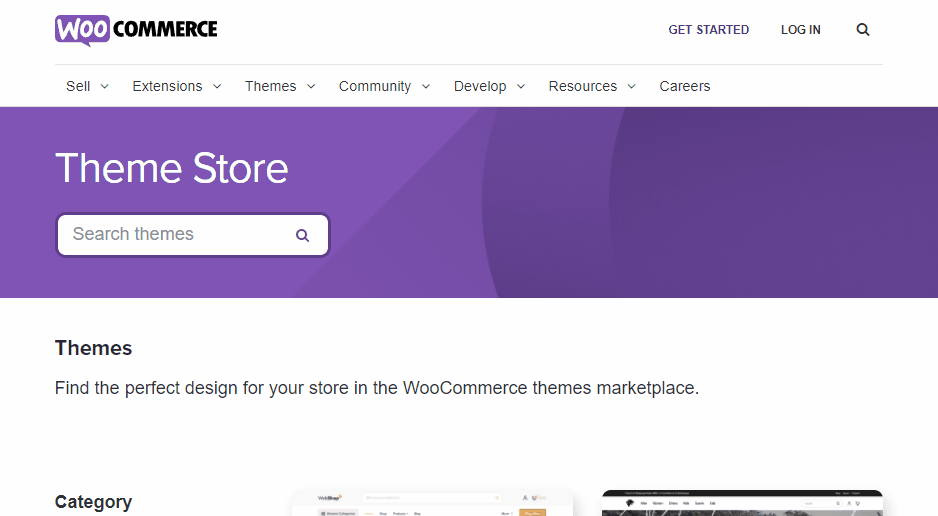
✅ Magento
Magento is on a downsize in terms of themes, compared with WooCommerce. It’s easy to configure and entertaining to use, and it’s suitable for a wide range of Magento development skills. You’ll be spoiled for choice with approximately 100 various templates to pick from, especially if you’re in the fashion, sports, or furniture industries.
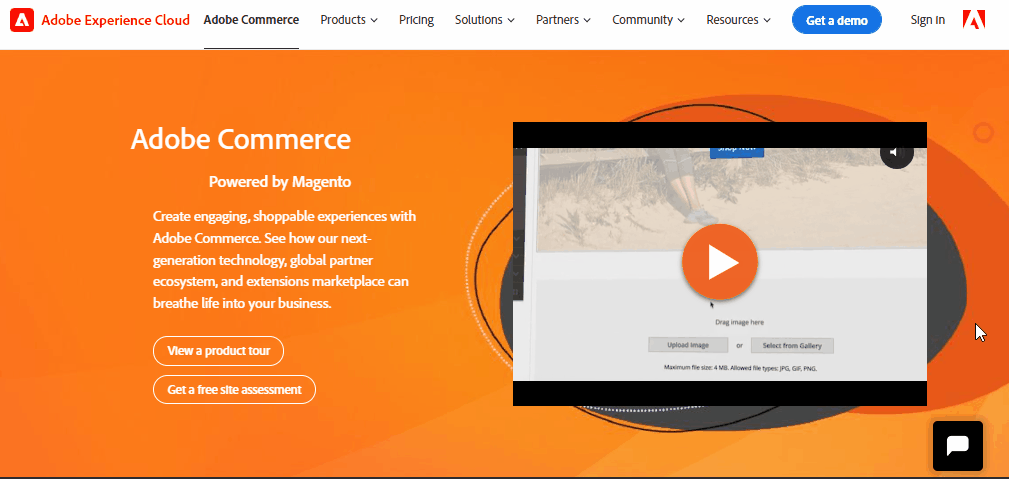
🔥 Want to create a WooCommerce?
Are you worried about using the WooCommerce plugin on the WordPress website to set up an eCommerce store? Learn 👉🏽 How to Set Up WooCommerce in WordPress: Guide for Beginner
#3 SEO Capability

One of the most effective ways to ensure that your customers find you is through SEO. You won’t make any sales unless they find you. As a result, it will be a waste of your time, effort, and money.
Strong SEO is required for any website that wishes to make an impact. Fortunately, both WooCommerce and Magento have a lot going for them.
✅ How WooCommerce Helps with SEO
WooCommerce’s benefit is that it is based on a dedicated blogging platform. WooCommerce users can optimize product pages by changing body content, basic URL redirections, meta descriptions, alt tags, and other page elements using the WordPress editor.
At the same time, WooCommerce provides a variety of SEO plugins to help you improve your store.
✅ How Magento Helps with SEO
In terms of SEO, Magento is at the top of the heap. It comes with strong SEO skills out of the box and offers a variety of advanced SEO extensions if you have more complex needs. Your store will simply obtain high search engine rankings and increased traffic attraction thanks to Magento’s SEO-friendly power.
#4 Limitations
✅ WooCommerce
- If not properly maintained, it is vulnerable to security risks.
- It can only be used on a WordPress-hosted platform.
- There’s a chance that one plugin will conflict with another.
- Self-hosting is required, as are regular upgrades to the core plugins.
✅ Magento
- To run, a complex system and developing knowledge are necessary.
- It is costly to use and maintain.
- It’s difficult to integrate third-party apps and themes.
- Constant software updates are required.
- To mitigate increased developer risks, the program must be managed and maintained by highly qualified developers. Definitely not for non-tech persons or beginners.
🛒 WooCommerce Amazon integration:
Moreover, WooCommerce also provides amazing integration services for multichannel sellers such as WooCommerce Amazon integration, WooCommerce eBay integration, and so on.
With litecommerce.com you can easily sync your WooCommerce store using Amazon Magento integration.
In which you can List your products, sync inventory, and manage all Amazon orders from one central place. And, without any technical skill is required.
#5 Pricing
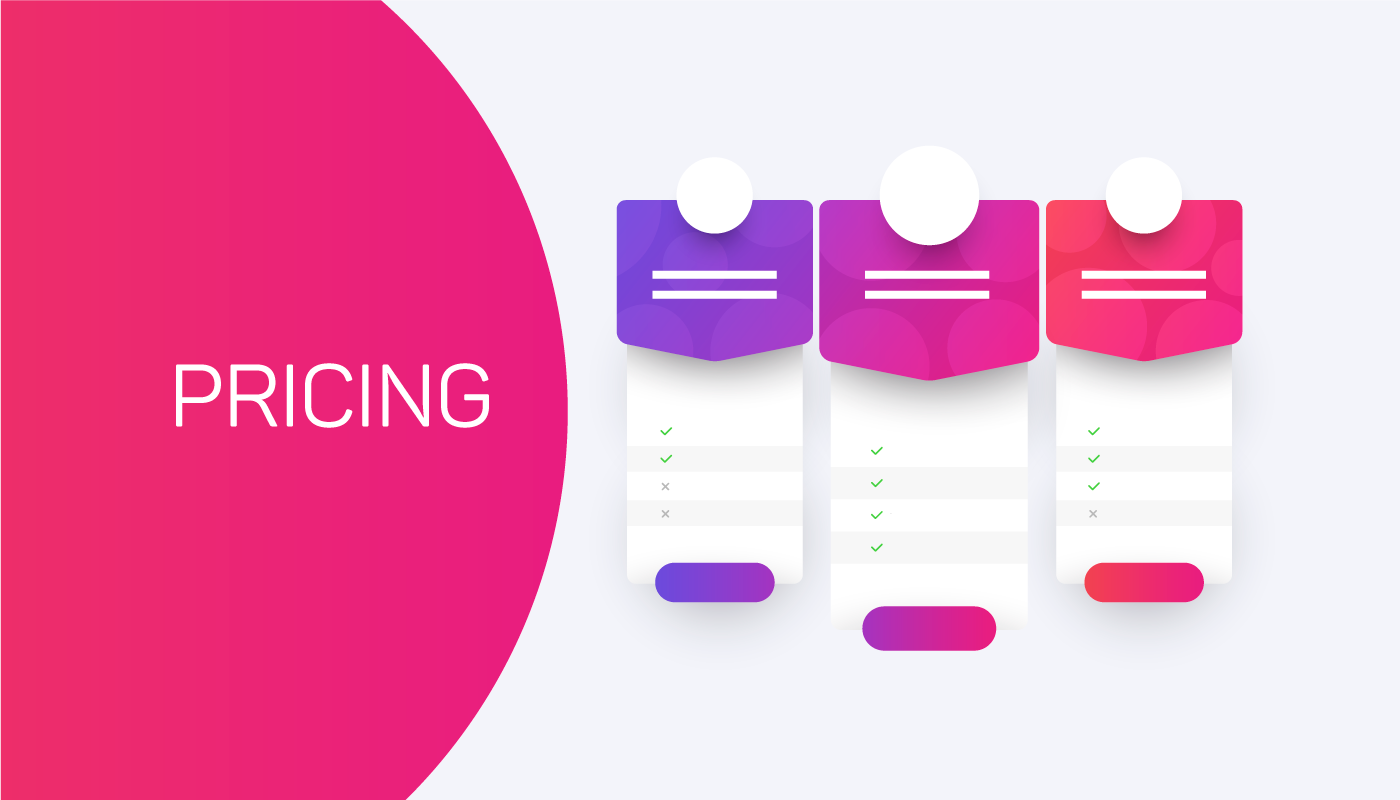
Both WooCommerce and Magento are open-source platforms with original code that can be readily tweaked and improved to meet your needs.
✅ WooCommerce
As a plugin for WordPress, WooCommerce is a free-to-download and use e-commerce platform.
✅ Magento
Magento’s community plan is free to download and use, but the enterprise plan costs roughly $18,000 per year.
#6 Ease to Use
The majority of people who set up an online business aren’t web designers or developers. Even users who are familiar with basic principles want an easy-to-set-up and operate platform.
Let’s explore how WooCommerce and Magento compare in terms of usability.
✅ WooCommerce easy to use
Because WooCommerce isn’t a hosted platform, you’ll need to take care of things like installing, managing updates, backing up your data, and ensuring that your store is secure.
Because you must first install WordPress, setting up WooCommerce is extremely difficult. To install WordPress, follow these steps:
Get a domain name on WordPress > Create a hosting account > WordPress should be installed > Locate and set up a WordPress theme.
After installing WooCommerce, you will see an on-screen setup process; to run your store, you must complete the following five stages.
We strongly advise you to utilize a reputable WordPress hosting service that will handle the entire setup process for you, including hosting, domain registration, and WordPress installation, as those processes do require some level of web knowledge.
✅ Magento easy to use
You could feel overwhelmed when you first start using Magento because there are so many new business phrases and technological concepts to learn. There are numerous functions and features accessible in Magento that necessitate the help of a professional to configure.
However, if you take the time to get to the bottom of them, you’ll notice that everything is well-organized and linked, allowing for future expansion.
#7 Speed & Performance
If your website’s loading time is poor, most users will leave immediately or never return to make a transaction. This results in a considerable decline in conversion rate and a loss of revenue for your company. As a result, while selecting a platform for your online stores, performance and speed are important considerations.
The performance of both WooCommerce and Magento will vary depending on their functionality and size. So, regardless of platform, the speed of your eCommerce site is largely determined by other aspects like your web hosting provider, whether or not your posted photos are optimized, and whether or not you use a Content Delivery Network (CDN).
#8 Security

When it comes to establishing an internet business, security is paramount. As a result, it’s no wonder that many retailers ask, “WooCommerce vs Magento, which is better for security?”
Both Magento and WooCommerce let you apply security measures, largely through manual processes and extensions.
✅ WooCommerce Security
With WooCommerce, you’re in charge of the majority of the security. To defend your site in further depth, you’ll need to purchase your own SSL certificate, set your site security plugins, enable two-factor authentication, be PCI compliant, and do a few more things on your own.
✅ Magento Security
Magento’s secure system is also as good as WooCommerce when it comes to online stores. Magento Patches are released on a regular basis to keep your website up to date with the latest technologies.
#9 Support System
Both WooCommerce and Magento are open source platforms that have substantial development communities. If you have any problems, you can look for answers in the community and receive help from people all around the world.
✅ WooCommerce Help Center
WooCommerce, like most open-source eCommerce solutions, does not offer live chat, phone, or email support.
WooCommerce, on the other hand, provides plenty of resources for merchants who wish to be in charge of their own support approach. This platform offers support in the form of WooCommerce Docs and a FAQ section where you may find solutions to practically any concern.
- Has a public knowledge base and community
- Only purchased extensions have access to support.
Furthermore, WooCommerce users can seek help from a thriving network of peers, developers, and WooExperts in a heartbeat if an unexpected contingency occurs, thanks to its vast user base.
✅ Magento Help Center
Magento users can obtain help from the community or employ third-party developers for the Open Source edition. You’ll get dedicated and direct support for Commerce and Commerce Cloud versions via tickets, email, and phone.
WooCommerce vs Magento: Which one you should go for?
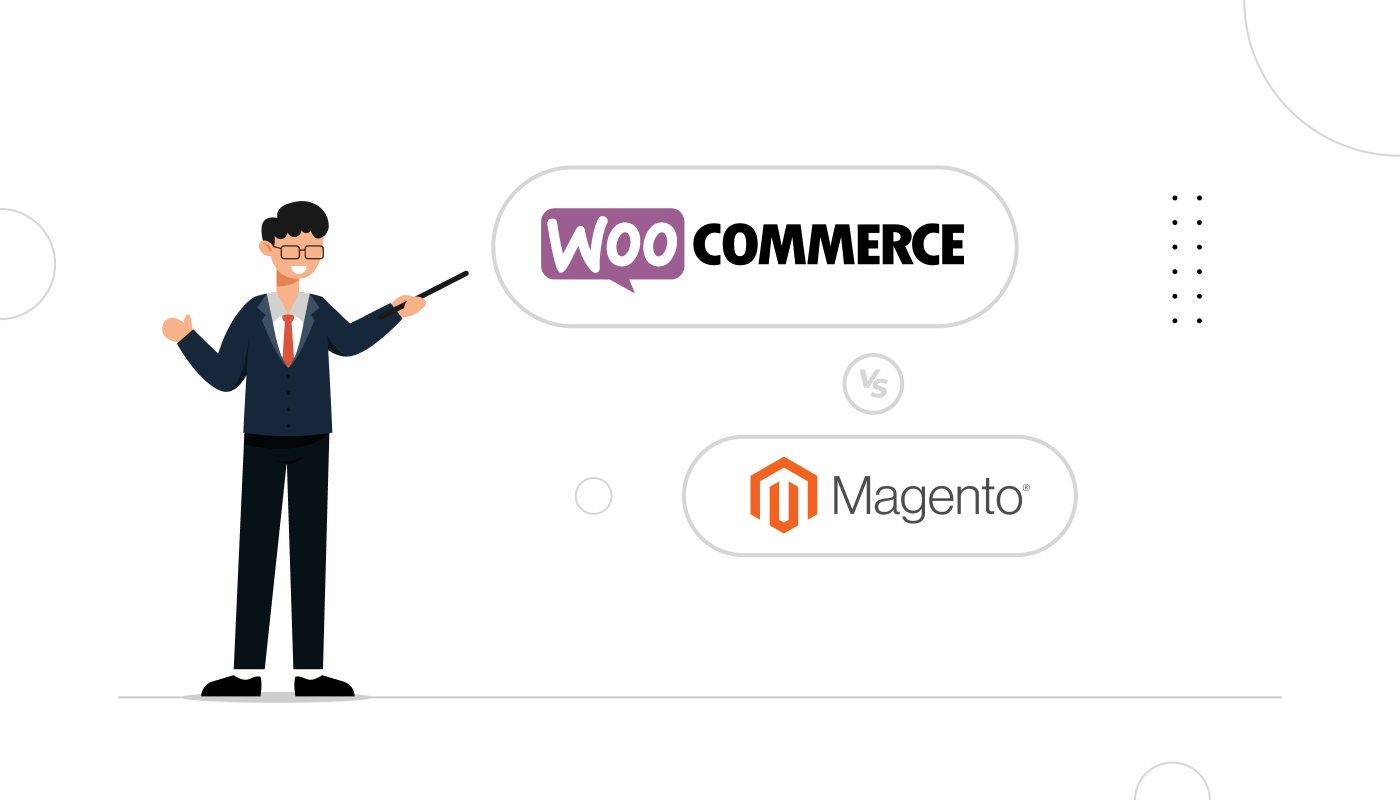
We’ve come a long way to compare and contrast WooCommerce with Magento. It’s time to reach a decision:
WooCommerce is the most popular easy-to-use eCommerce platform on the market as a superb component for WordPress. WooCommerce’s functionality, on the other hand, is primarily reliant on its additional plugins, as the core capability of WooCommerce is relatively limited.
Magento is also a remarkable platform for eCommerce sites. However, if you don’t have technical coding knowledge, you might suffer a little while using Magento.
This is the most significant distinction between Magento and WooCommerce. On the other hand, Magento can be cost-effective as well!
➡️ Also, have a look at WooCommerce vs Opencart blog.
Conclusion
This type of comparison is never straightforward. Our recommendations continuously change based on their unique circumstances.
Lastly, we hope that this post has helped you compare the advantages and disadvantages of Magento versus WooCommerce. You might also be interested in our guide on customizing WooCommerce My Account dashboard.
ShopEngine is a dedicated WooCommerce template builder plugin. In which you’ll find tons of useful modules, widgets, and templates. That can help you create an eCommerce site with ease and will save a lot of your time along with money.
If you like the blog then please don’t forget to drop your feedback in the comments section below.

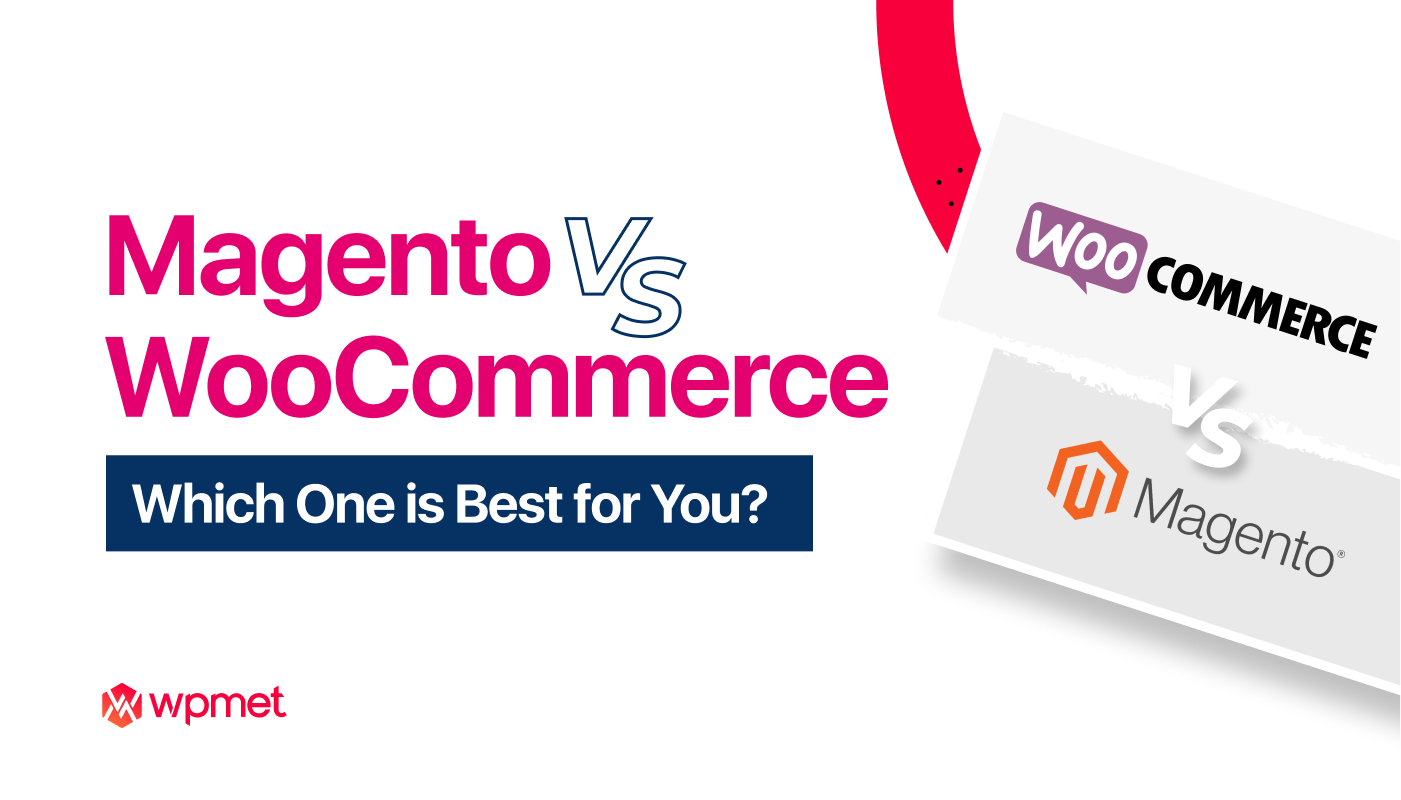
Leave a Reply